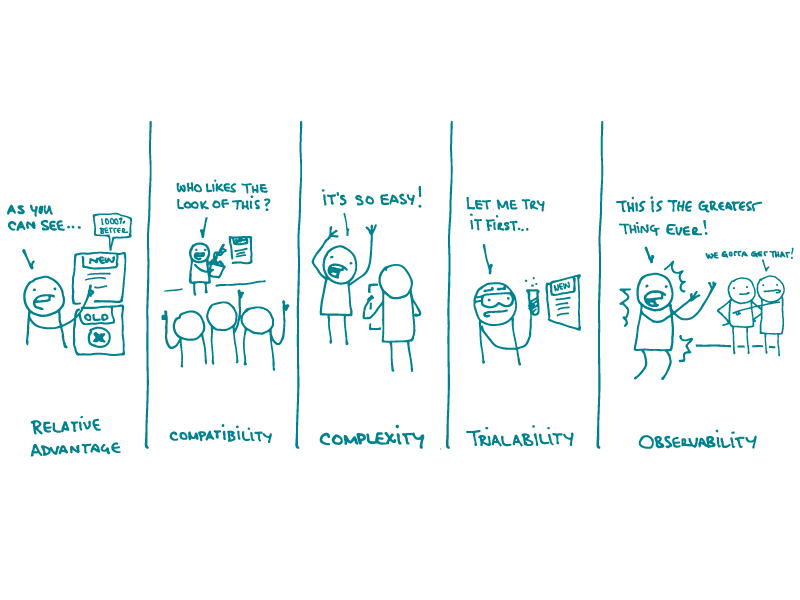
Imagine you have come up with an awesome new health literacy initiative. You’ve put in the time planning, developing, and testing it. You’re about to educate hundreds — scratch that — thousands. You can see it catching on: health literacy is taking the world by storm.
Now, how do you make your vision a reality? That, dear readers, is a very important question! The sad truth is that most big ideas don’t make it because more attention is given to creating the ideas than spreading them.
Fear not, health literacy warrior! Look to the Diffusion of Innovations Theory. This theory describes many things, but where we see its value is in explaining how new innovations catch on. Understanding this can help you better promote and market your program.
Use the following concepts when you explain the benefits of your program to the masses. (Don’t be intimidated by the fancy buzzwords!)
- Relative advantage: How much better your innovation is than whatever it’s replacing
- Compatibility: How your innovation connects with potential users’ experiences and values
- Complexity: How easy or hard the innovation is to adopt (we’d like to rename this one Simplicity)
- Trialability: Whether or not users can try out the innovation before committing to it
- Observability: How easy it is for users (and the people they know) to see results from using the innovation
By applying these concepts when you promote your program, you’ll greatly increase the chance that people will give it a try.
The bottom line: When promoting a new idea, use the Diffusion of Innovations Theory to increase the chance of it catching on.
Tweet about it: Diffusion of Innovations Theory to the rescue! http://bit.ly/2rYimsF via @CommunicateHlth #HealthLit
Browse recent posts